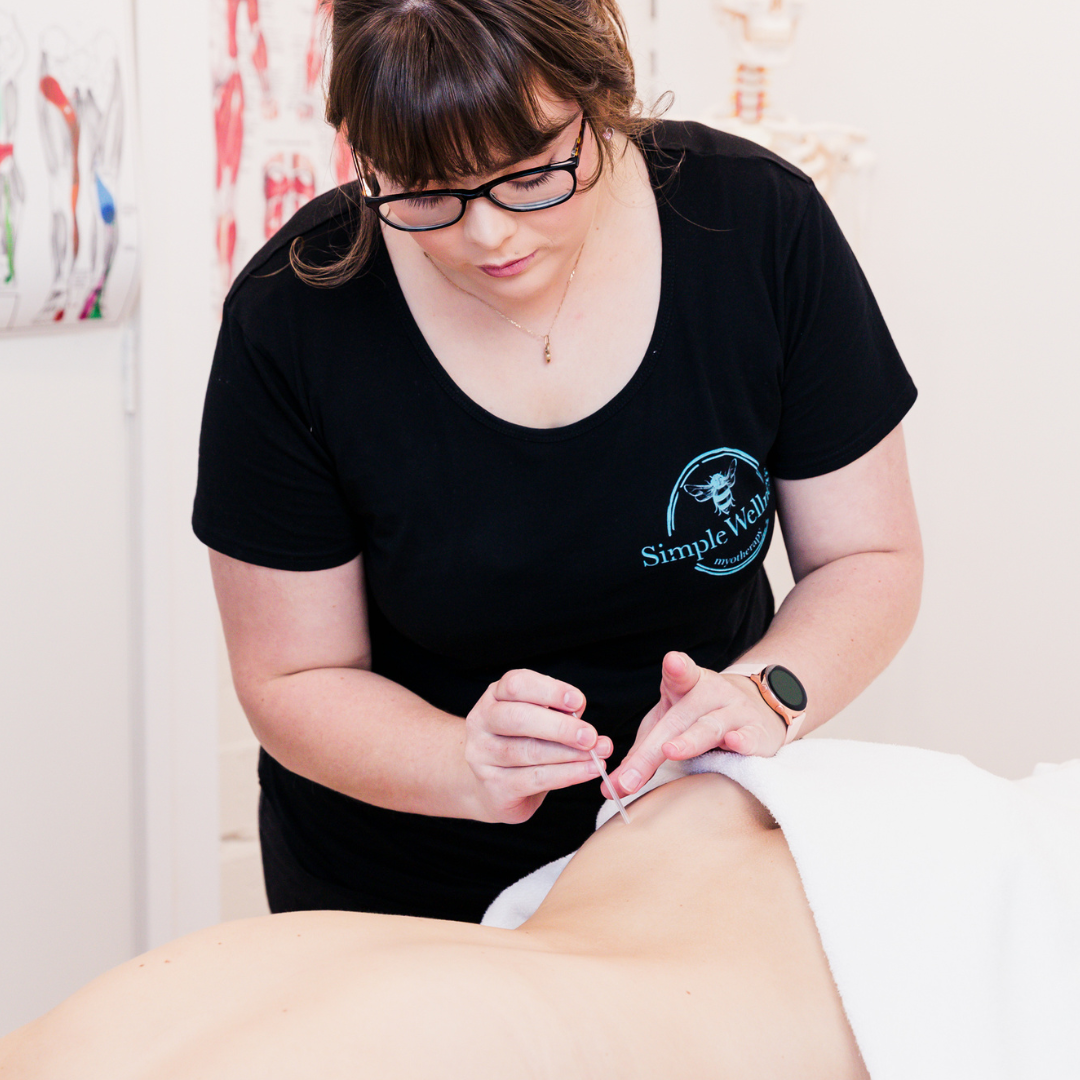|
By Rachael Bird, Myotherapist
The time it takes for your body to start feeling better after seeing a myotherapist can vary depending on several factors, including the nature and severity of your condition or discomfort, the specific techniques used by the myotherapist, and your individual response to treatment. Here are some general considerations:
By Rachael Bird, Myotherapist Myotherapy is a type of physical therapy that focuses on the assessment, treatment, and management of musculoskeletal pain and dysfunction. This means your favourite Myotherapist primarily targets soft tissues, such as muscles, tendons, ligaments, and fascia, to alleviate your pain and improve overall function. We have a variety of advanced techniques that can be used to calm down painful areas, reduce strain on injured muscles and joints, activate weak muscles and rebuild strength and stability. Our treatments include hands on massage and myofascial techniques; dry needling; cupping; MET (muscle energy technique); joint mobilisations; stretching; taping; prescribing exercises to restore muscle balance and strength; providing education and home care advice on how to give your body the best opportunity at recovering. Myotherapists are goal oriented healthcare professionals - that means that we carefully plan our treatment for your pain based on the outcomes we want to help you achieve. We can help you in the following way
Pain Reduction:
If you have pain, there’s a good chance you’ve used or been prescribed pain relievers. There is a lot of stigma around the use of pain relievers because of issues such as addiction or long-term health effects. In my opinion, it’s ok to use pain relievers if you are experiencing pain, as long as its not the only pain relief strategy you're using - I like to see that you know why you have pain, and that you're making changes to any of the factors you can to reduce ongoing pain in conjunction with taking medication. Pain relievers can play an important part in injury recovery and pain management, particularly for those who experience chronic pain. What are pain relievers, and what do they do?
Pain relievers are any form of medication that do exactly what the name says – relieve pain. Different pain relievers work on different parts of the body to produce different pain-relieving effects. Some pain relievers such as ibuprofen stop damaged cells from producing inflammatory compounds, which can slow down the pain message. Others, like paracetamol, work directly on the brain to reduce how your brain perceives the danger signals. You’ll often see pain relievers referred to as ‘pain-killers’. I avoid this term, because ‘painkiller’ implies that it totally and permanently eliminates your pain. But pain-relievers are a tool that reduce pain for a period of time. They can’t ‘fix’ your pain, but they can make you feel better for a little while, so you can continue to actively work on recovery through rehabilitation and treatment. Pain relievers are part of your treatment plan You can get all of the massage and myotherapy treatments, but sometimes, pain strikes when you aren’t able to book in a session. That is where pain relievers can come into play. Often, pain relief is needed to allow you to get to sleep and stay asleep for at least a few hours. Sleep is when the body does its most healing, so good sleep is critical to long-term pain reduction. Research has also found that sleep deprivation can make you more sensitive to pain. So if pain is keeping you awake, using pain relief may be the better option, rather than ‘toughing it out’ and lying awake. The only thing I don’t recommend is relying on pain relievers as your only method of pain relief. Pain relievers by nature are temporary – they don’t fix the root cause. Whether your pain is caused by physical damage, a sensitised nervous system, inflammation or something else, the only ‘fix’ is a plan that addresses the underlying issue. If you’ve experienced pain for longer than a week or two, it’s time to seek professional help. If you’re using pain relievers long-term, speak to your GP Pain relievers, like any other kind of medication, can have long-term health consequences and side effects. Even over the counter medications can be problematic long-term – that’s why they put oodles of warnings inside! If you are needing to use pain relievers for more than a few weeks and it hasn’t been prescribed by your GP, make an appointment. They might be able to recommend a more effective prescription for your specific type of pain or offer you the safest option if you do require long term medication. At the very least, they know you are taking it and can monitor you, so they can spot any side effects in the early stages. If you don't have a regular GP, come and meet Dr Wajib Dib at Together Medical on Ferntree Gully Rd in Knoxfield. Our treatment room is inside the Together Medical practice, and Dr Dib is a fully Bulk Billed GP with an interest in musculoskeletal health. You can also ask for advice on medications from the Pharmacist at Knoxfield Pharmacy. We have a staircase with direct access into the pharmacy from our clinic reception. Massage and myotherapy can play a supportive role in the healing journey if you’re experiencing chronic pain. At Simple Wellness Myotherapy, chronic pain is our passion. To book in an appointment, head to our booking page here. |
Meet Our Team
We have a team of great practitioners available 7 days a week at our Rowville clinic. Archives
July 2024
Categories
All
|
Got a question about Myotherapy?
Contact Mel by phone, email or Facebook
|
Simple Wellness Myotherapy & Remedial Massage Clinic
Shop 12B 150 Kelletts Rd Rowville VIC 3178 |
Phone us on
03 8204 0970 |



 RSS Feed
RSS Feed